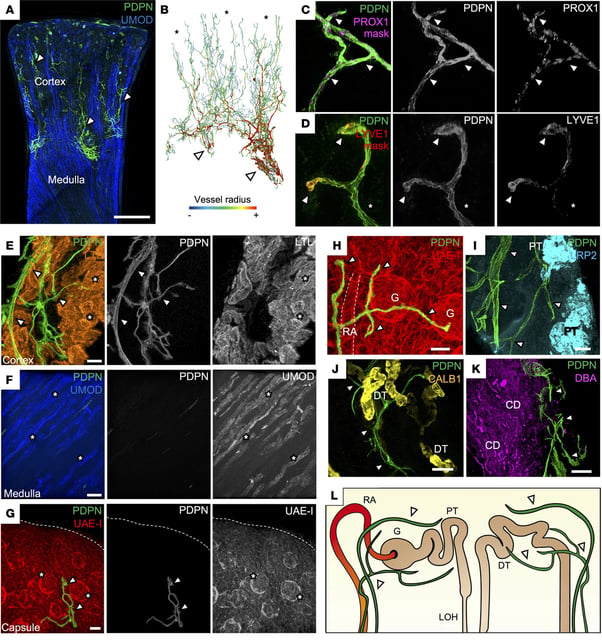Overview
- Teams from the Wellcome Sanger Institute, UCL and the University of Cambridge mapped human kidney lymphatics using large-scale single-cell RNA sequencing integrated with intact-tissue 3D imaging.
- During chronic rejection, lymphatic vessels extended into the normally lymphatic-free medulla and became structurally disorganized.
- Endothelial junctions in these vessels shifted from button-like to zipper-like formations, a pattern associated with trapping immune cells.
- T cell distributions and signaling were altered, and harmful antibodies showed evidence of targeting not only the kidney but the lymphatic vessels themselves.
- The peer-reviewed findings, published September 16 in the Journal of Clinical Investigation (DOI: 10.1172/jci168962), reframe lymphatics as active participants and potential therapeutic targets, though the work remains observational.

